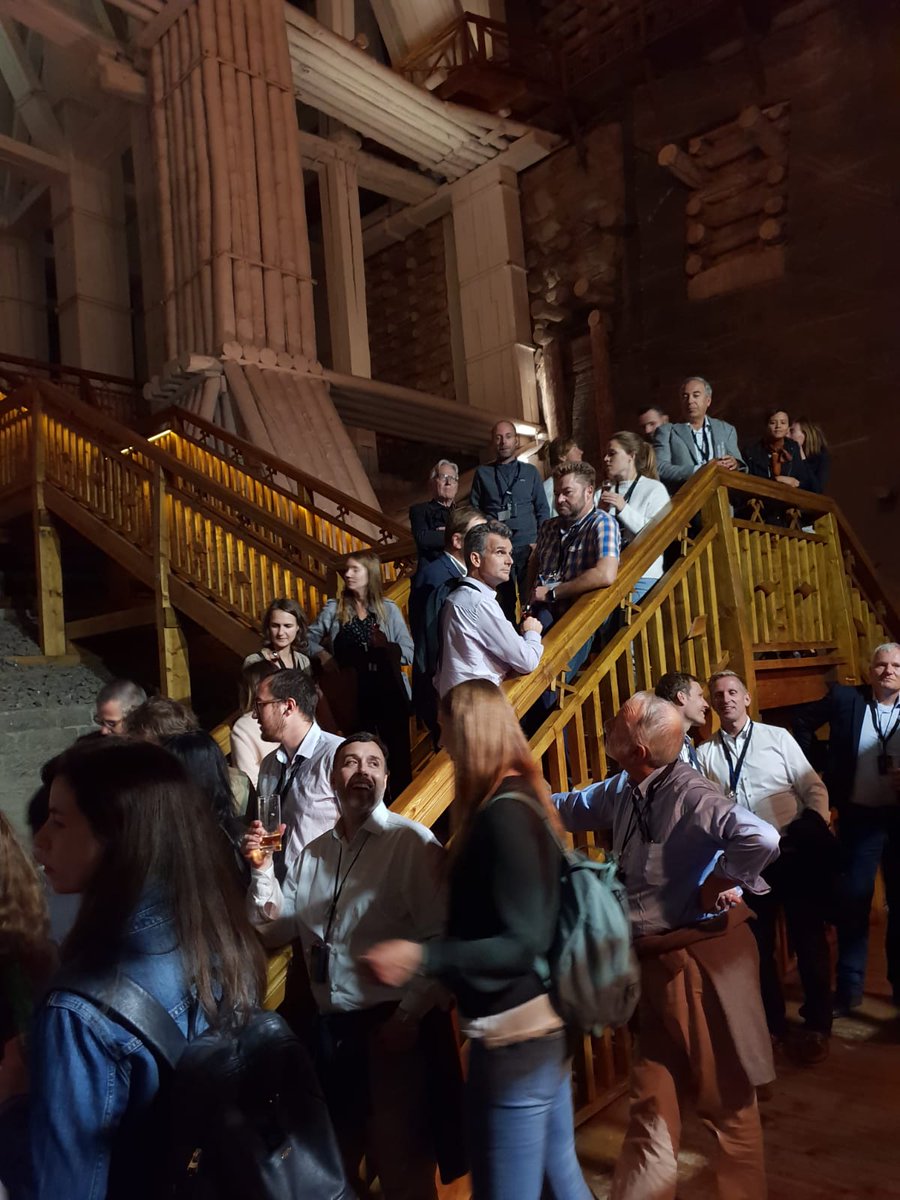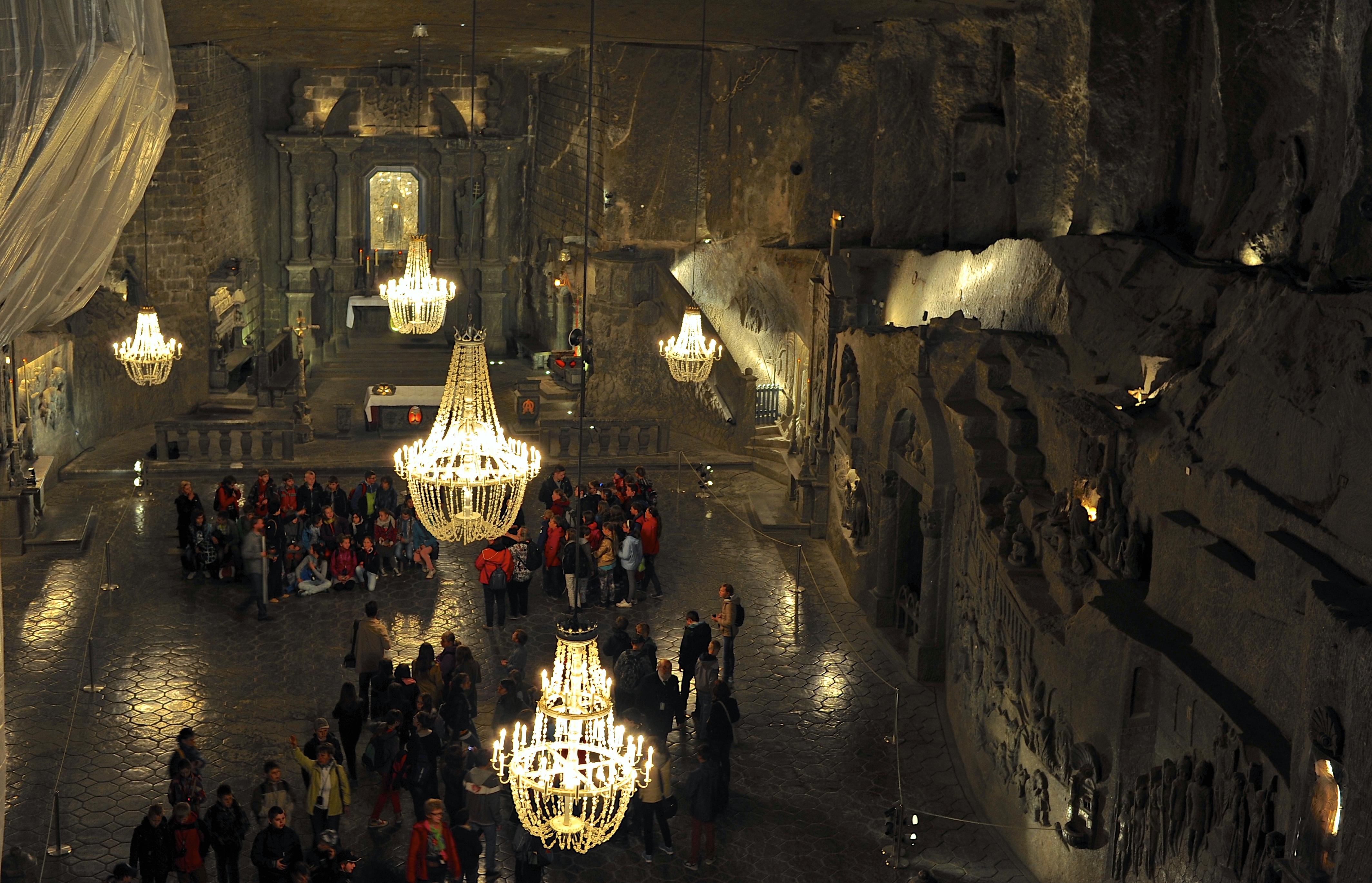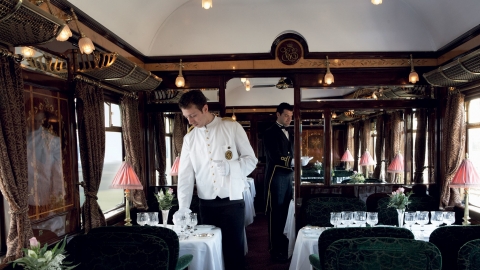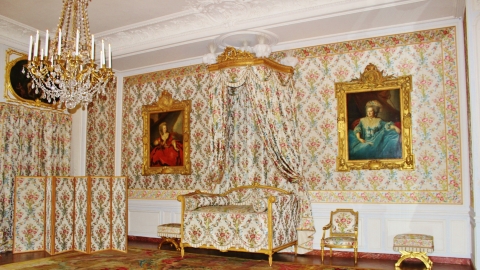The European continent has many world-famous majestic caves, but besides the natural caves bestowed by nature, there are also artificial caves, built by human hands to serve life.

One of the most famous man-made caves is Wieliczka - a salt mine in the southern part of Poland. This salt mine was used by the local people from the 13th century, operating until the 20th century when it was stopped and put into conservation.

A street mural depicting Wieliczka's legacy
Legend of the Guardian God
The Wieliczka Salt Mine is one of the famous tourist attractions in Poland, and is known to many international tourists. This is a salt mine with a system of caves, tunnels, lakes, churches, sanatoriums and passages forming a strange underground city located in the town of Wieliczka, 13 km from the center of Krakow city.
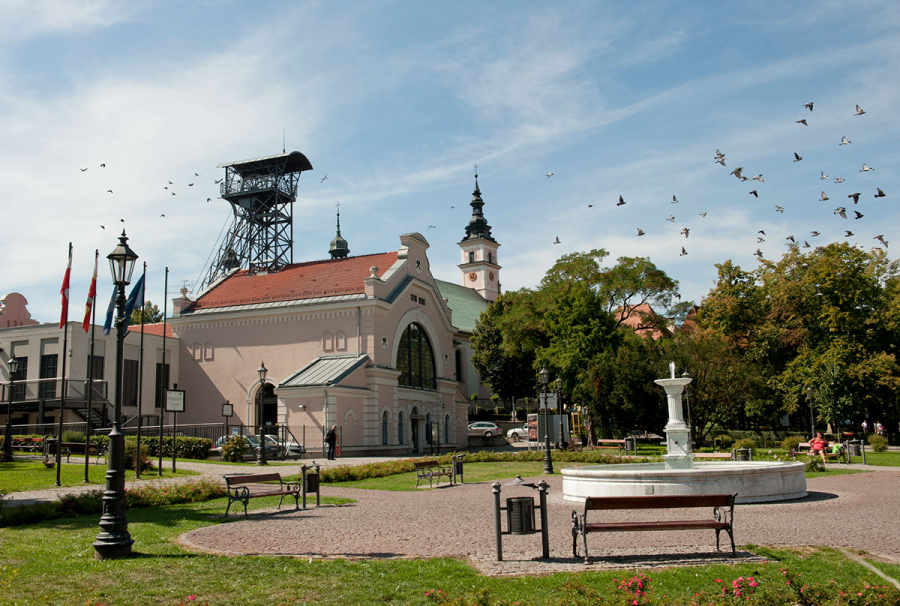
The Wieliczka Salt Mine is associated with the legend of Princess Kinga. She was the daughter of King Béla IV - the great king of Hungary. When she was 15 years old, because of the friendship between Hungary and Poland, Kinga was married to Boleslaw - Prince of Krakow. Before she followed her husband to Poland, King Béla IV asked his daughter what she wanted as a dowry, the princess replied: she wanted a gift for all Polish people and that was the salt blocks in the Erdély region. The princess then dropped her wedding ring into the mine to confirm her ownership and then returned to Poland with a group of Hungarian miners and the princess opened a salt mine in the suburbs of Krakow. That is the legendary story about the formation of the Wieliczka Salt Mine.
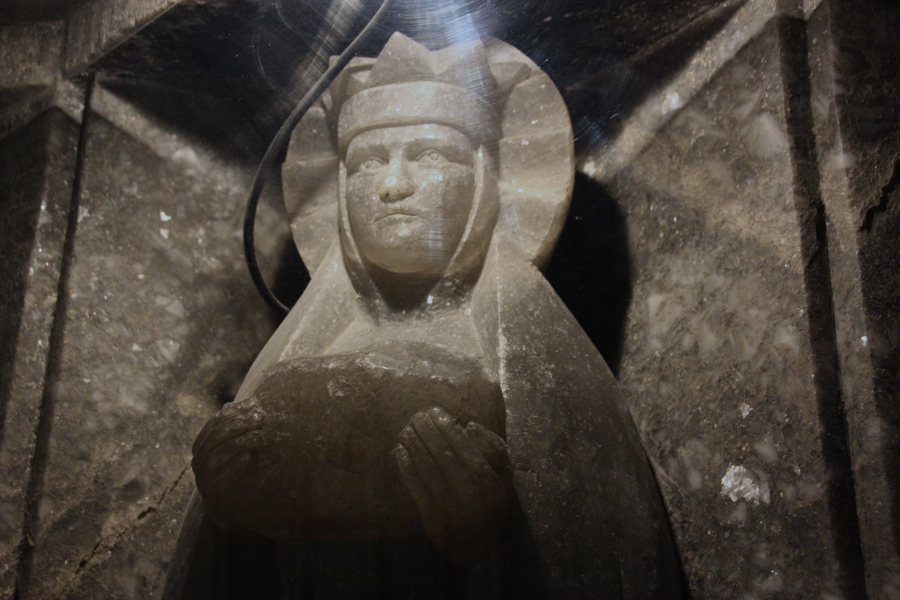
The story may be just a legend, but in the hearts of every Polish person, Princess Kinga is forever a beautiful symbol of the filial piety of a foreign bride to her husband's homeland. After the salt mine area developed, Princess Kinga was honored as the patron saint of the salt mine and the miners. To depict this legend, people carved a statue of Princess Kinga and her entourage searching for the wedding ring in the salt mine.
Underground city
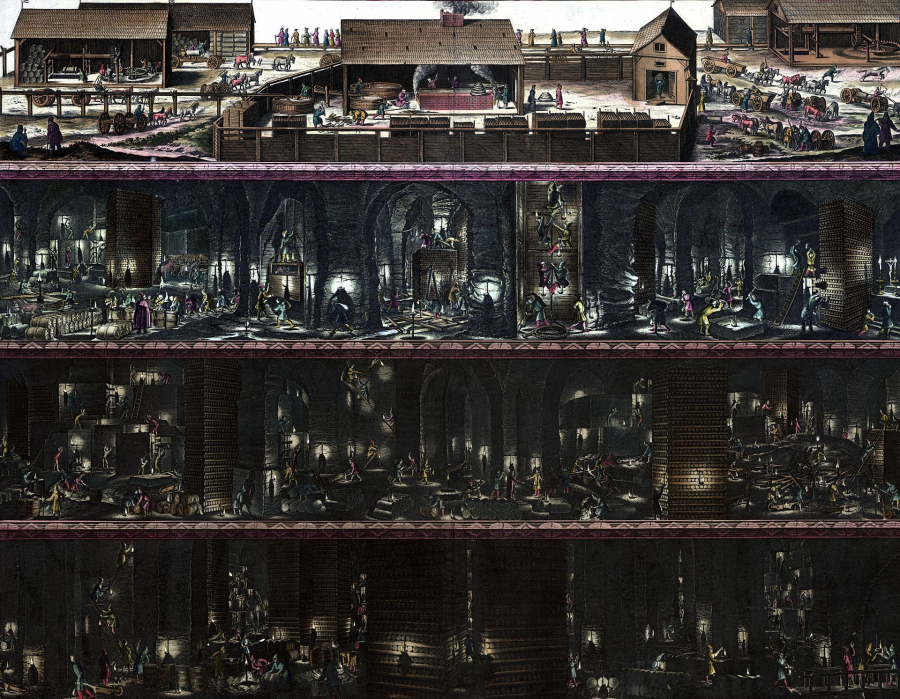
Just hearing the two words “salt mine,” surely everyone thinks that this is a normal “mining” area like coal mines, copper mines, etc. with a messy living space. But the Wieliczka salt mine area is not like that, but is planned in extremely detailed and neat. If not for the signs showing the way to the salt mine area, few people would know that they are walking on an extremely large underground mine system located very deep underground.
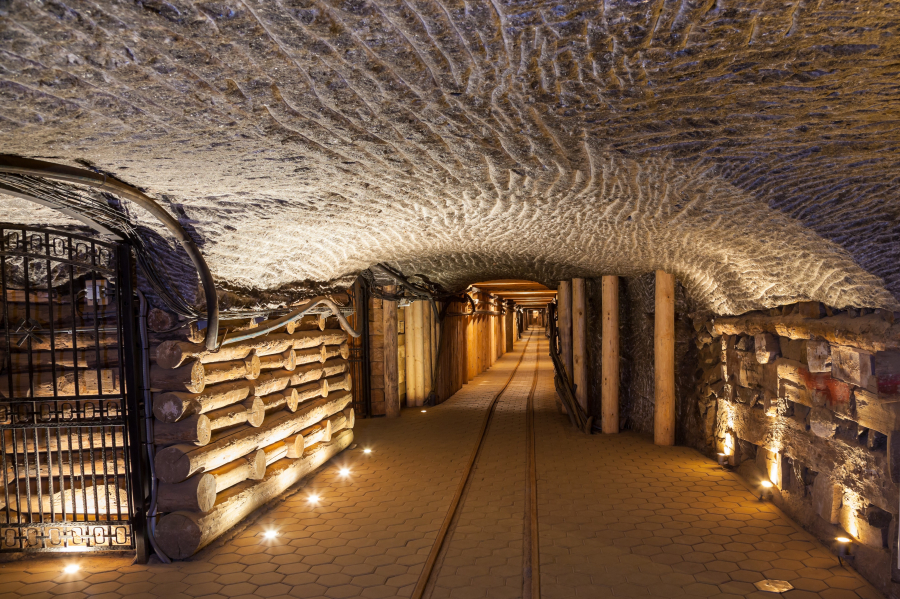
According to scientific research, about 20 million years ago, the Wieliczka area was a sea with natural caves. This area gradually became land and sea salt was accumulated in caves and underground crevices to form salt mines.
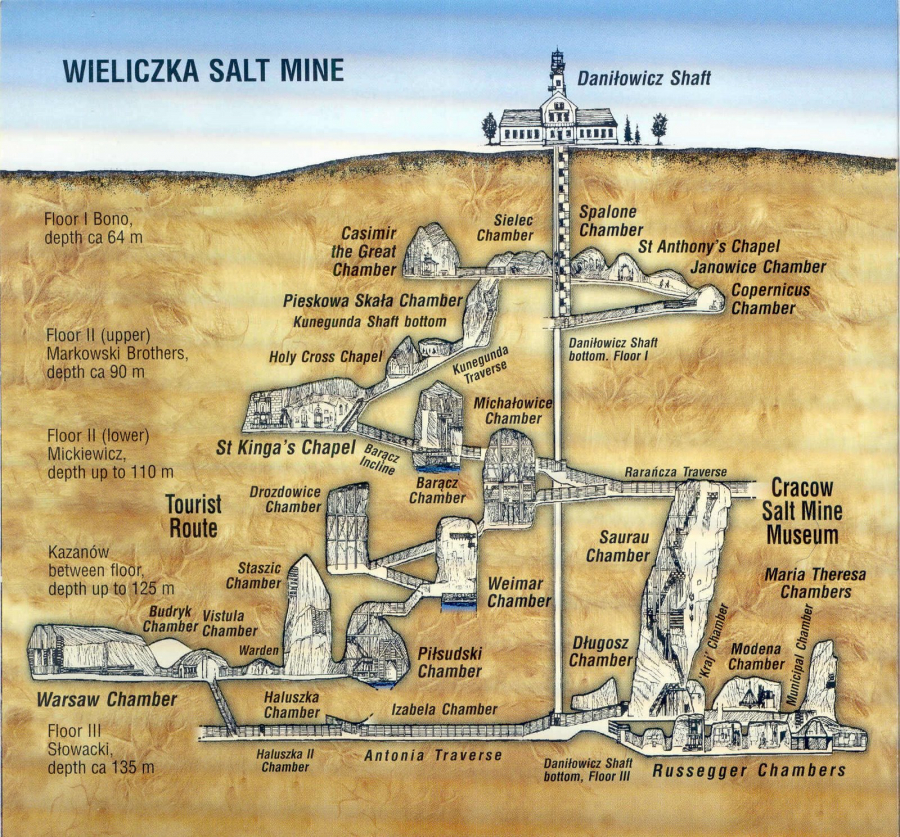
The attraction of the Wieliczka Salt Mine is the "spectacular" underground city that humans have discovered. This is a huge underground system, stretching 300 km, the deepest point is up to 327 m. The salt mine is divided into three main sightseeing floors. The first floor is about 64 m deep, the second floor is divided into two parts, the "upper" part is more than 90 m deep, the "lower" part is up to 125 m deep. The third floor alone is up to 135 m deep. All three floors today become basements for visitors to enjoy and learn more about the mining techniques of the ancient people who worked here.
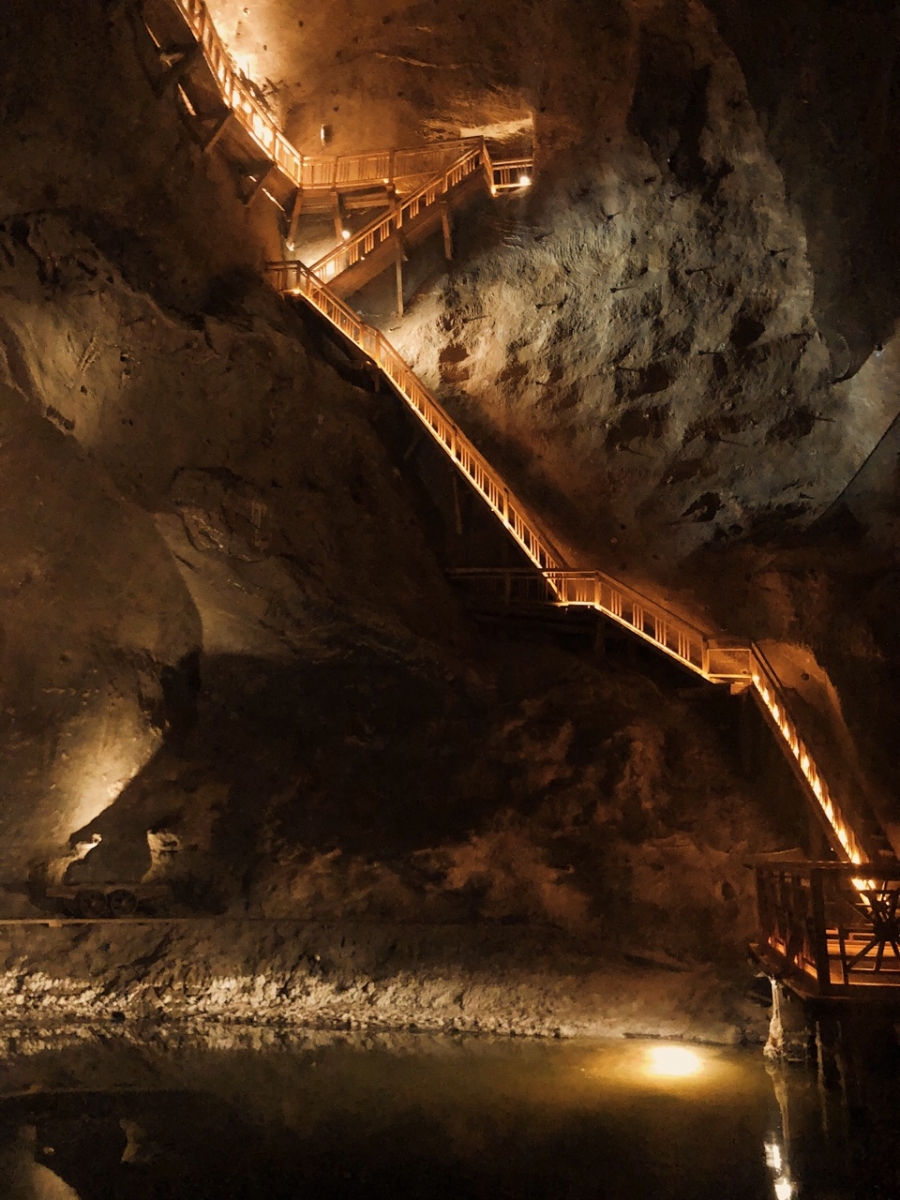
This is a giant underground system, stretching 300 km, with the deepest point reaching 327 m.
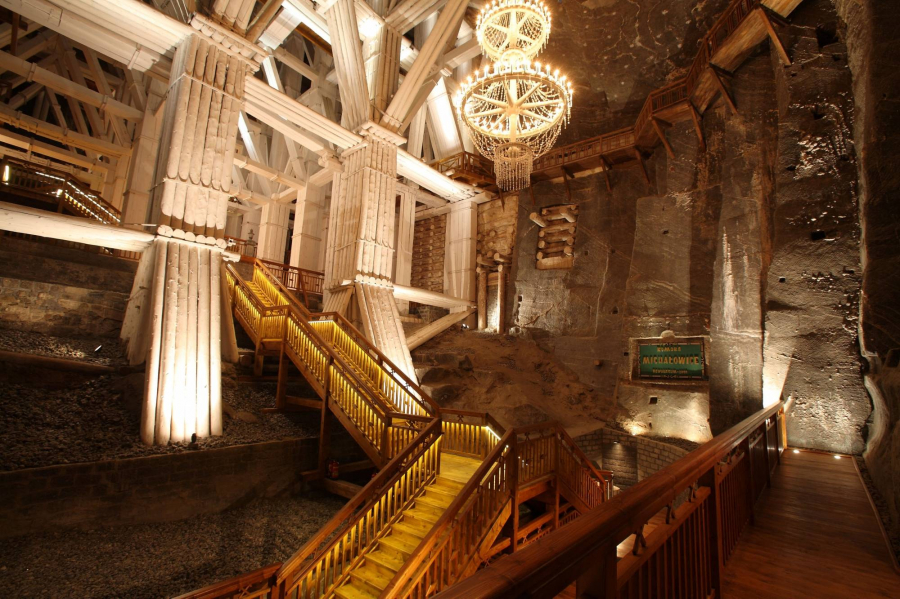
With more than 3,000 large and small caves, 3 large corridors, ranging in height from 64 m to 135 m, Wieliczka salt mine is a unique work of art because the architecture in the mine's rooms are all made of salt.
With such a large salt mine, it is estimated that the amount of salt here is enough to feed the Polish people for dozens of centuries. However, if the Wieliczka Salt Mine was just a salt mine to serve the production of ordinary "table salt", it certainly would not be famous and attract so many tourists.
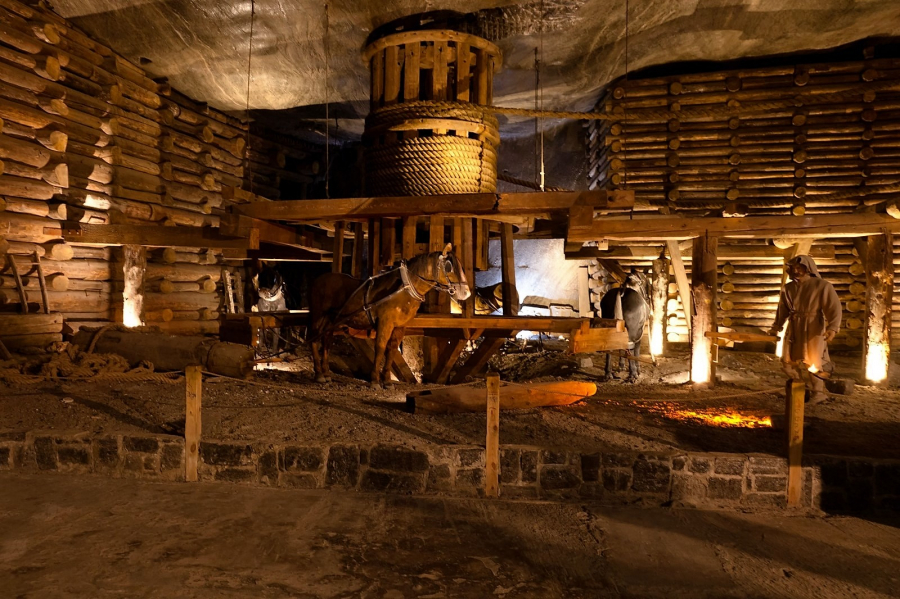
Due to the nature of their work, these miners always work hundreds of meters underground and are very susceptible to many unpredictable dangers. Therefore, they have turned to religion and the gods that protect the mines. People not only sculpt statues of the supreme beings but also carve underground churches to pray and rely on their faith.

Since then, the underground churches here and the giant system of this entire salt mine have become a wonderful legacy that the ancient miners left for posterity with their own talent and hard work.
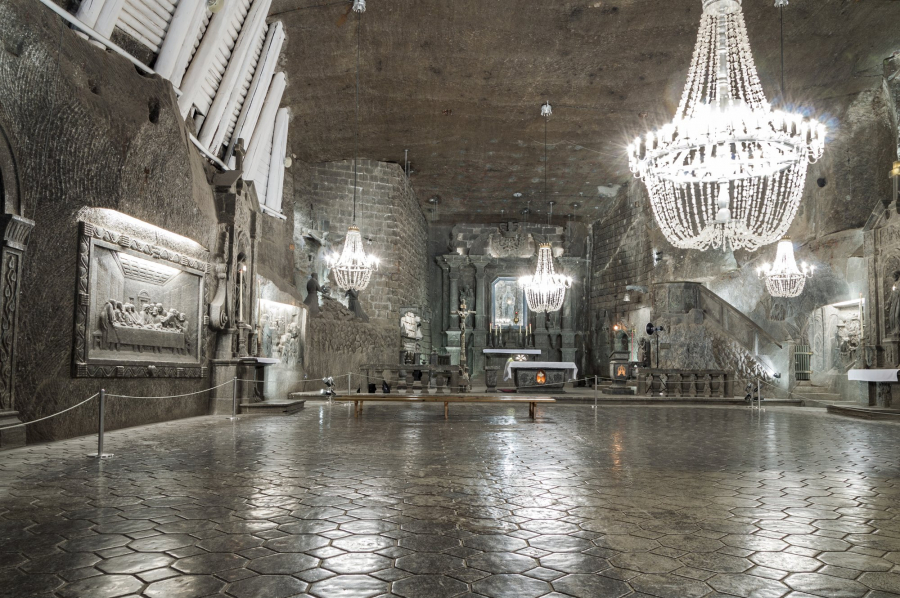
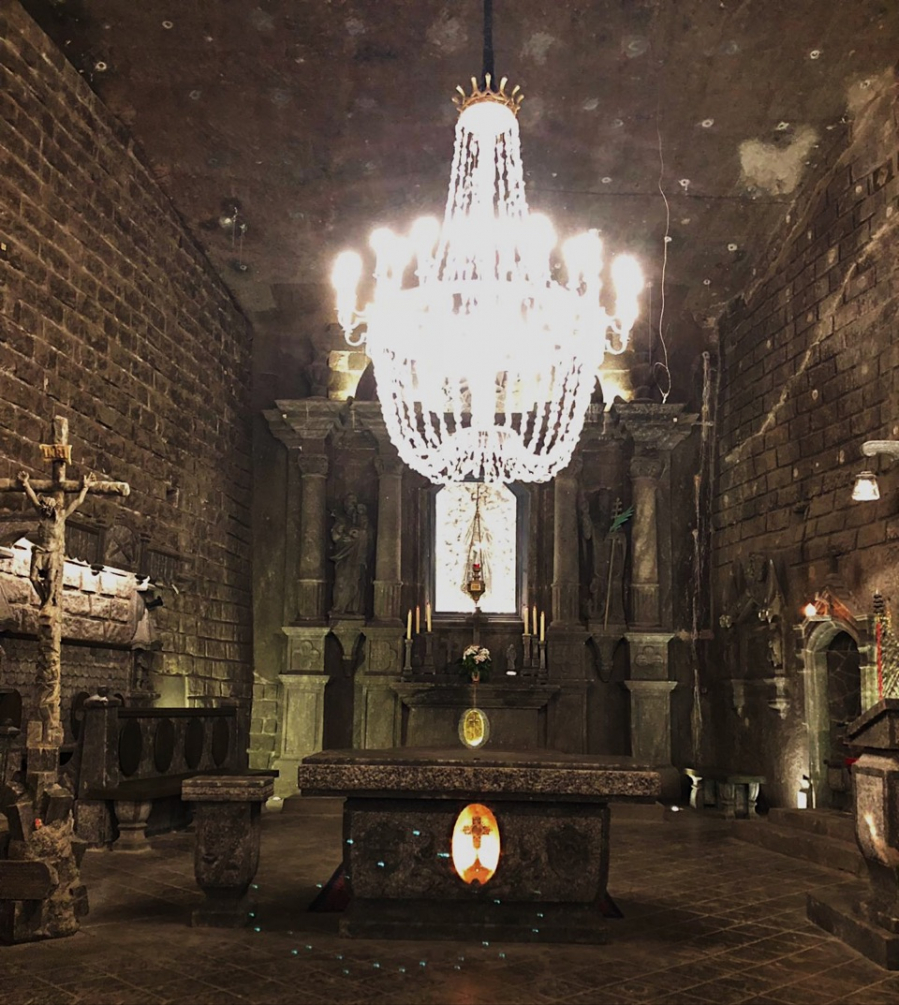
Many large caves in the mine have been turned into churches, notably the St. Kinga Church, which began construction in 1896 and was completed in 1963. The St. Kinga Church is 54 m long, 15-18 m wide, 10-12 m high and has magnificent chandeliers on the ceiling.
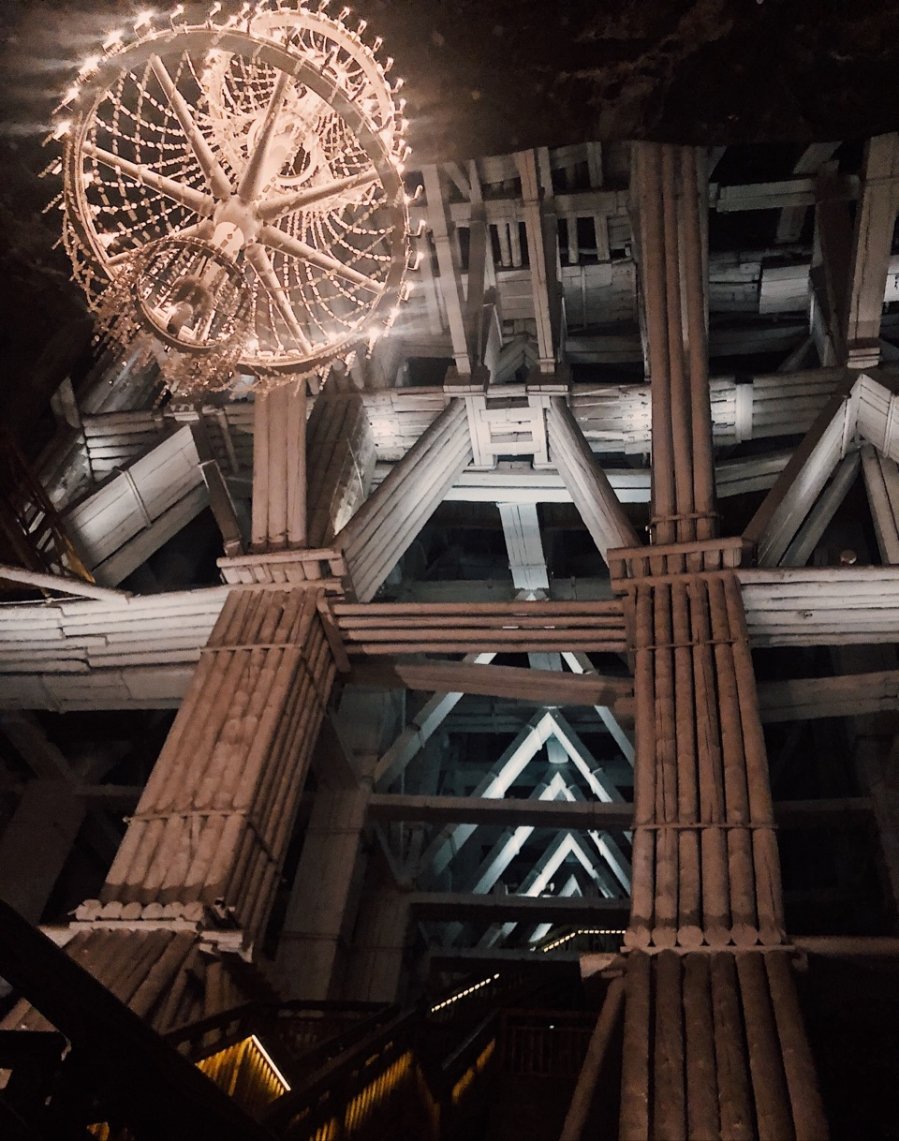

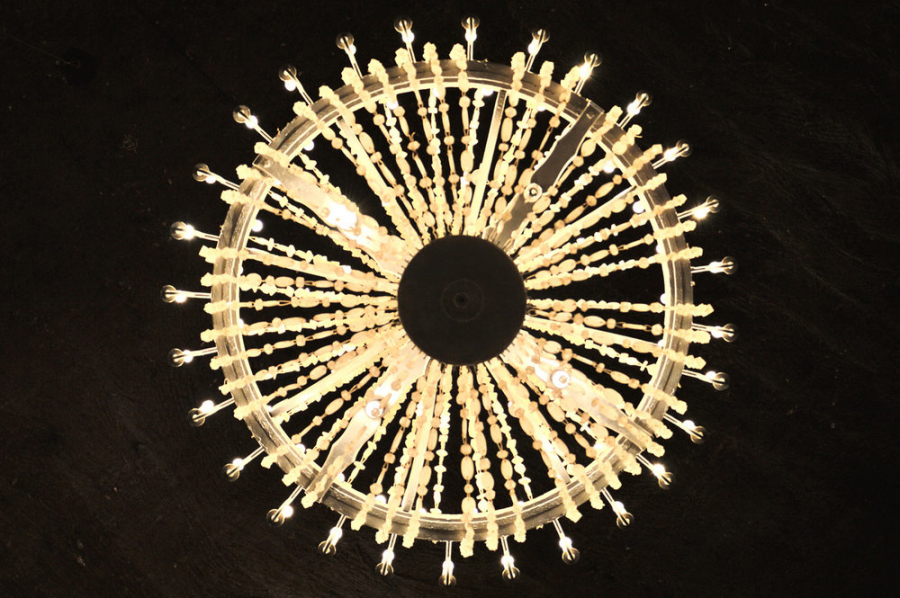
In addition to the 3-meter-high statue of the Virgin Mary, there are many reliefs here, notably the painting of the Last Supper by Leonardo da Vinci. Everything in the church is made of salt: the mythical statue, the altar, the ceiling and the floor. Even the chandelier is made of salt crystals. Everything is very elaborate and took a long time to complete.

3 meter high statue of Virgin Mary from salt rock
Here, visitors will be amazed by the magical beauty of nature, as well as the magical hands of humans. The rooms, shrines, chapels, and all the miners' tools over the past 700 years, have told all about the miners' lives, work and silent battle with nature.
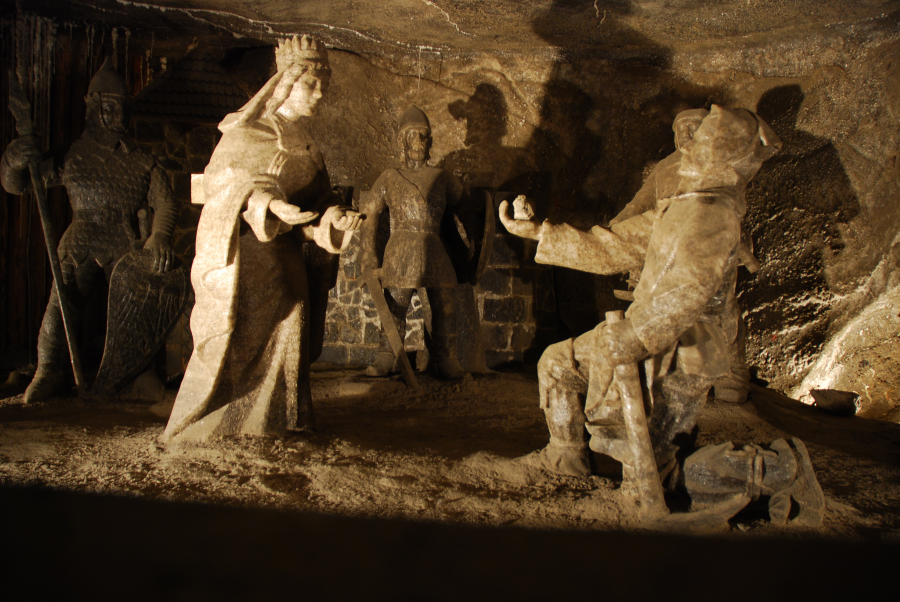

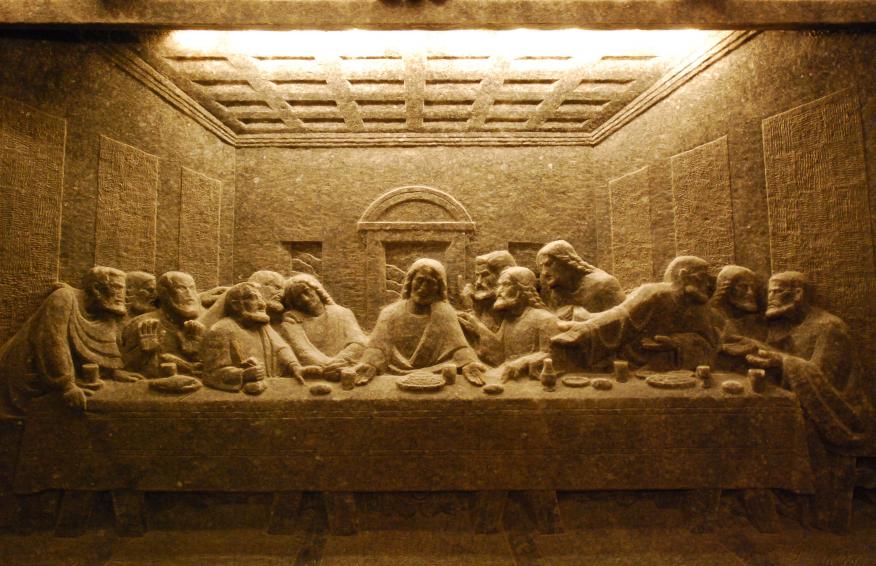
The magical beauty of nature and human ingenuity
From the outside, the Wieliczka Salt Mine looks simple with an old building that looks like a train station in a campus covered with green trees and colorful flowers. But when you go deeper into the ground through the stairs, you will be overwhelmed by the space opening up like a magnificent maze.
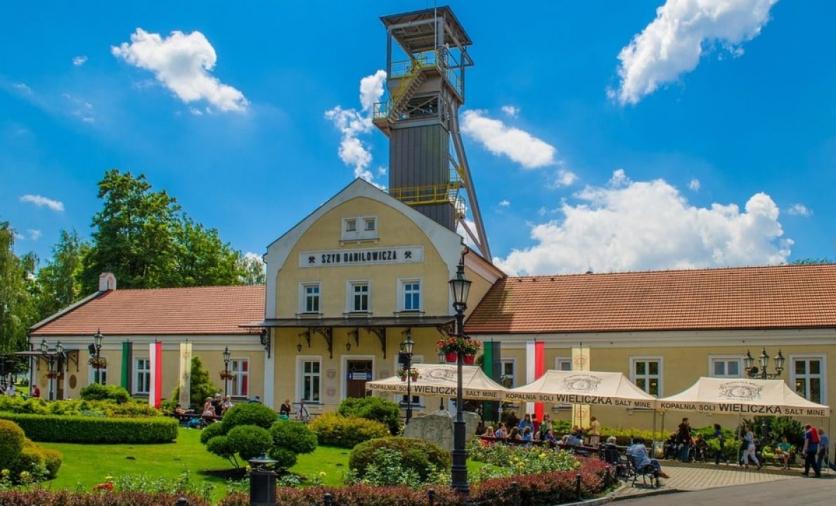
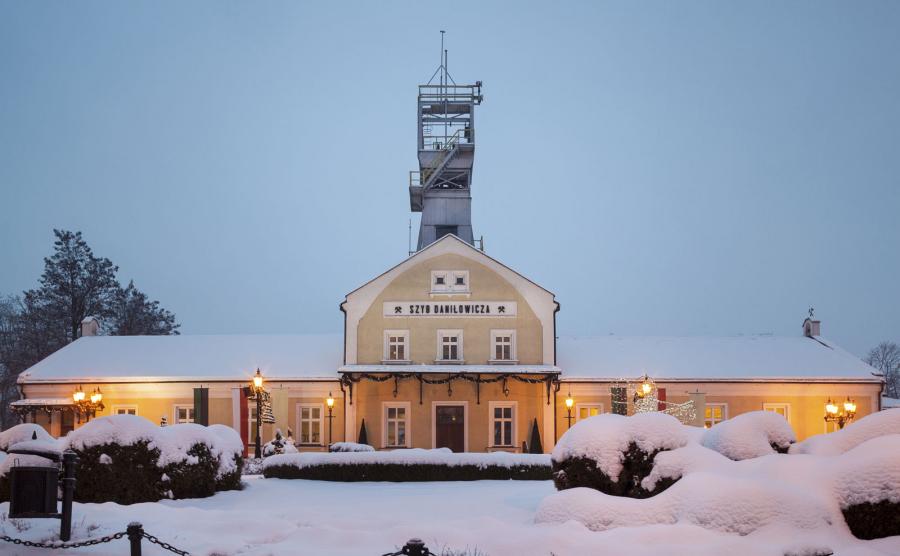
There are two ways to go down the mine to visit the salt mine. One is to go down the mine by the elevator that the miners used in the past, but now it has been redesigned to ensure the safety of visitors. The other is to walk down the stairs. It is estimated that visitors will have to walk about 2,000 meters underground to visit the salt mine.
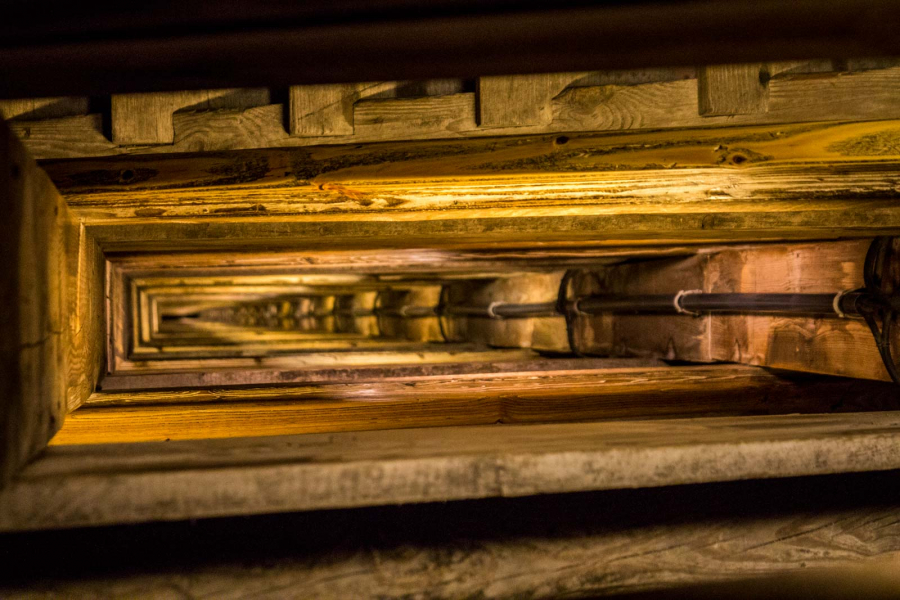
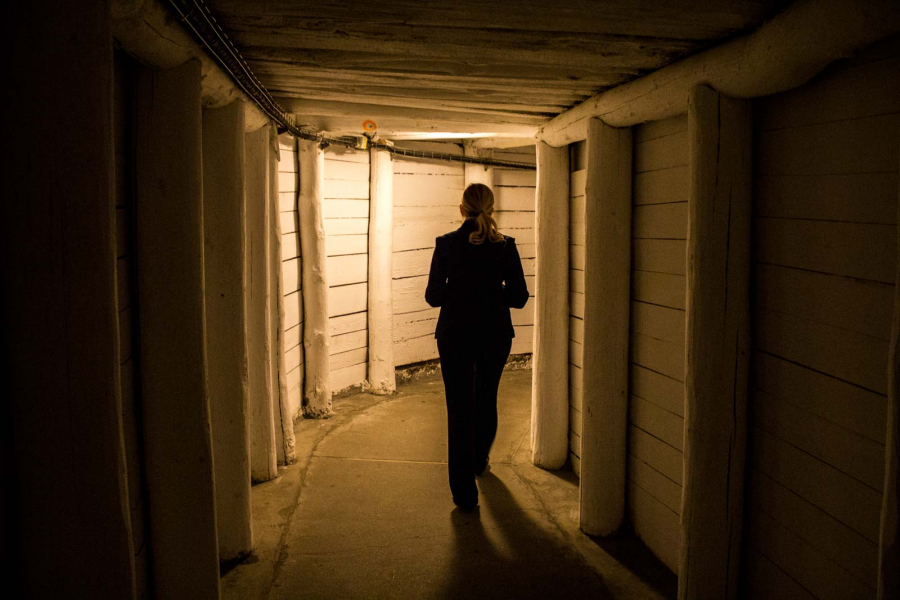


The path down to the Wieliczka Salt Mine is made of deep wooden stairs and corridors filled with the dampness of salt. From here, dozens of sculptures such as galleries, libraries, treatment rooms, churches, restaurants, post offices... all made entirely of salt will appear before the eyes of visitors.
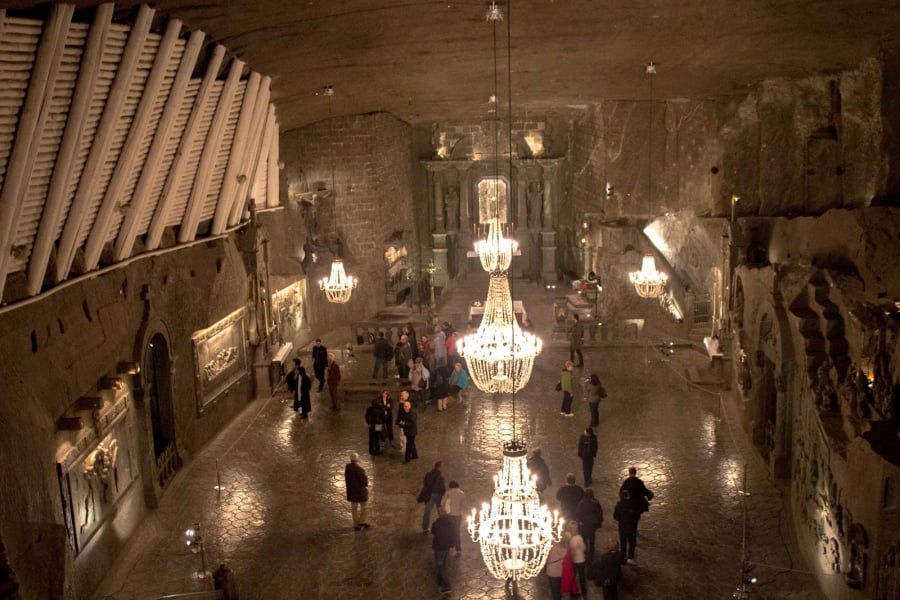
The largest lobby in the mine
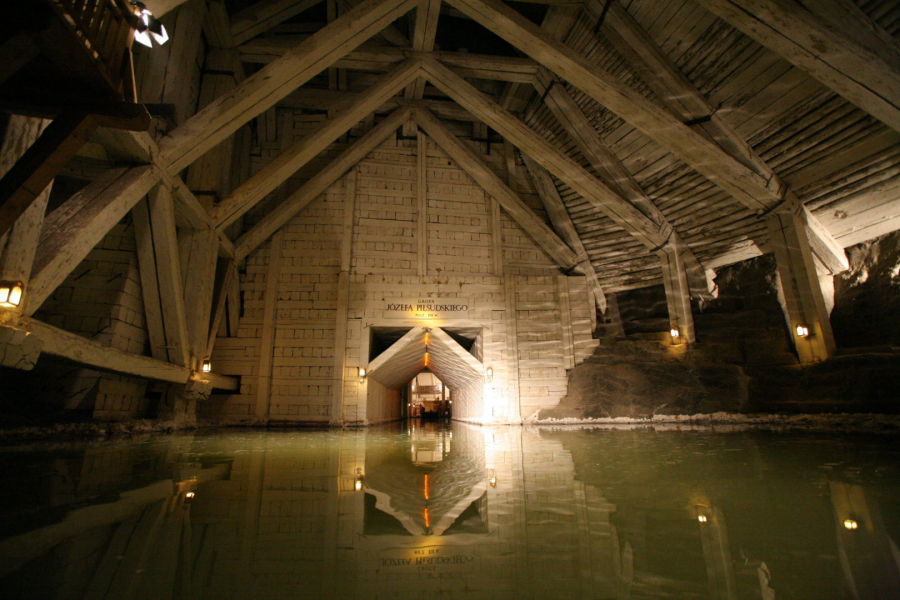


Concerts and other events are occasionally held in the mine’s largest auditorium. There is also a sanatorium for asthma and allergy sufferers located about 135 meters underground. There is also a huge museum displaying centuries-old salt mining equipment.

Huge museum to display centuries-old salt mining equipment

The soft pine trunks lining the corridor, after a long time of absorbing the moisture of the salt, have become as hard as stone. Along the corridor are statues of famous figures in Polish history such as the explorer Nicolas Copernicus, saints and famous kings of Poland. All are carved from crystallized salt, bringing a mysterious beauty that is different from other materials.
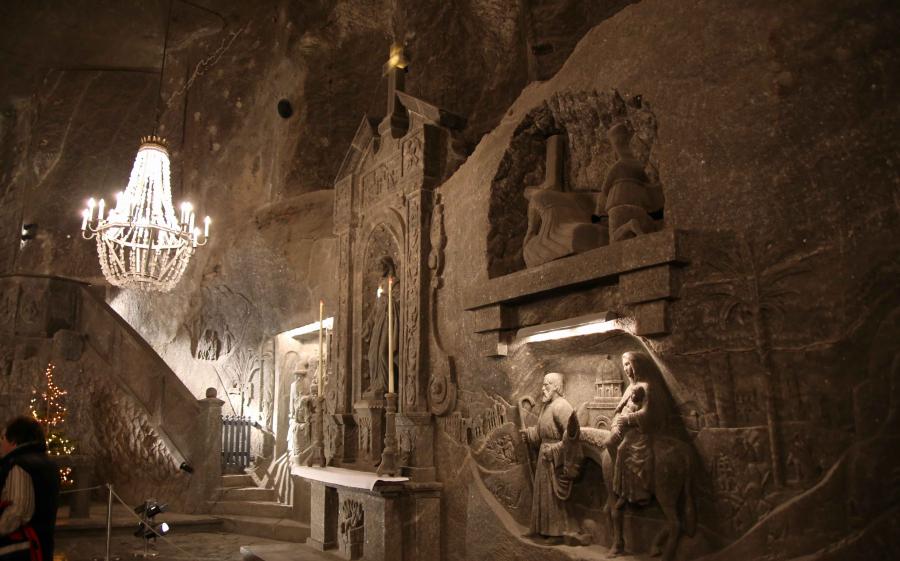
In addition to its unique architecture and sculptures, the Wieliczka Salt Mine also has underground salt lakes at its deepest levels. Visitors can take a ferry across the many salt lakes to visit the salt museum, which has been open to the public since 1950.
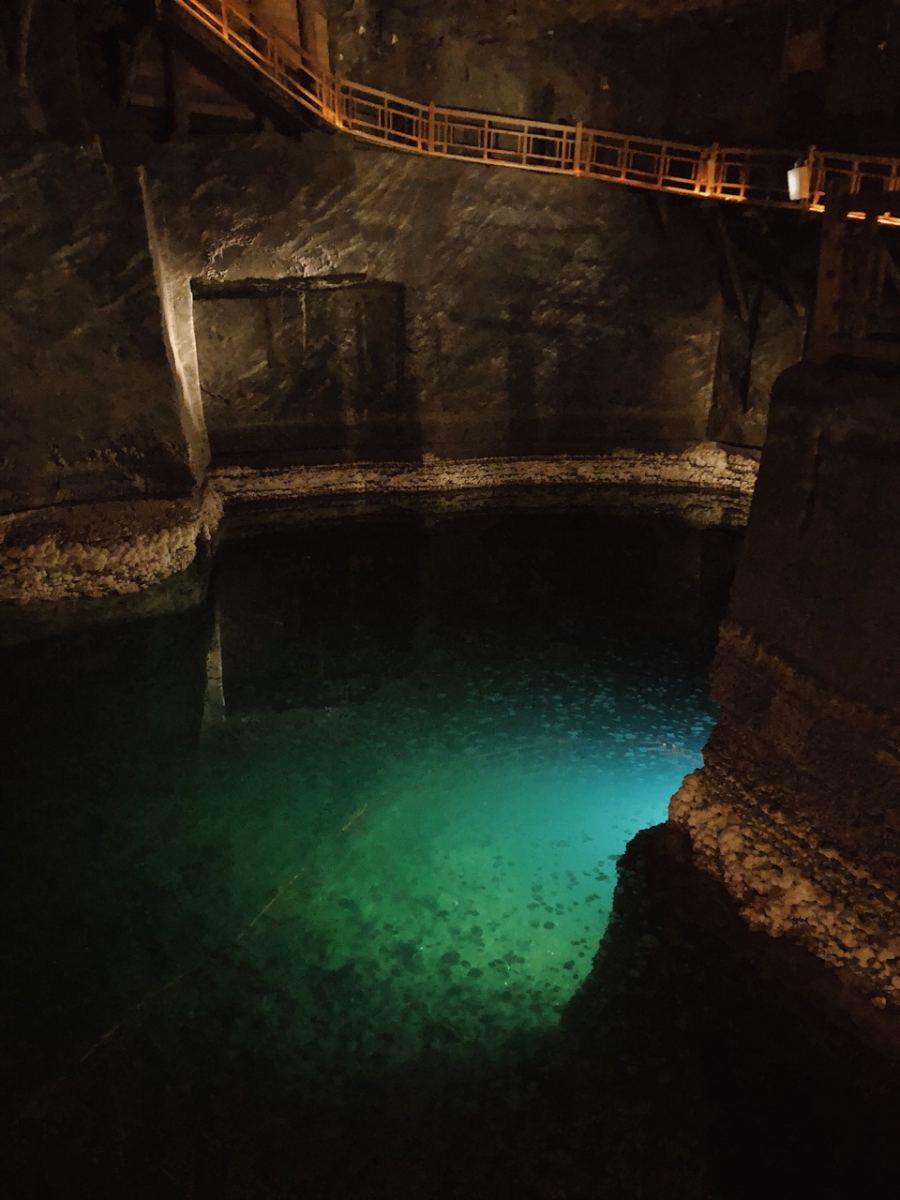
Deep blue salt lakes
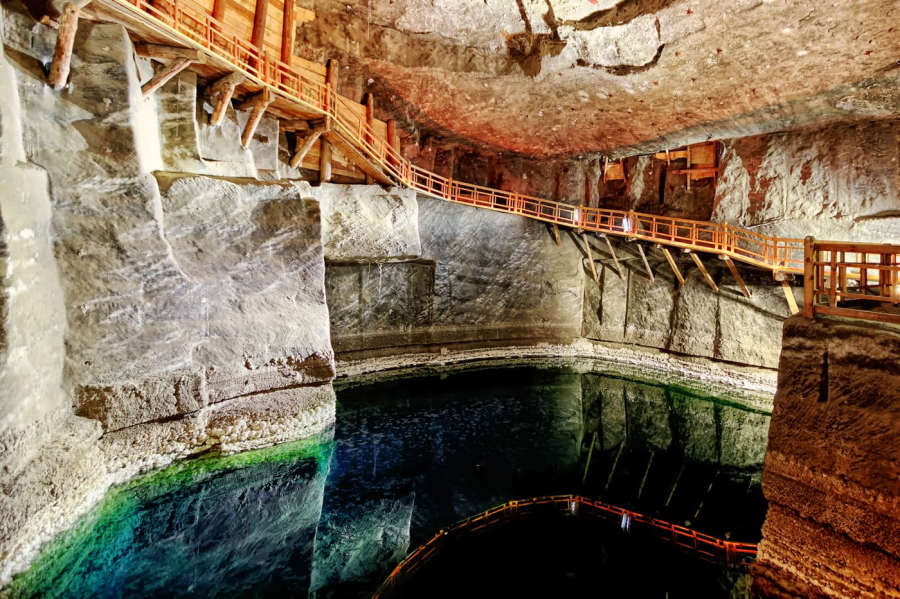
Although the entire mine area is exploited very deep underground, strangely, at the underground level of 130 meters underground, visitors can contact the outside world by mobile phone. This is also a special feature that is still difficult to explain and has become a feature that attracts the curiosity of visitors.
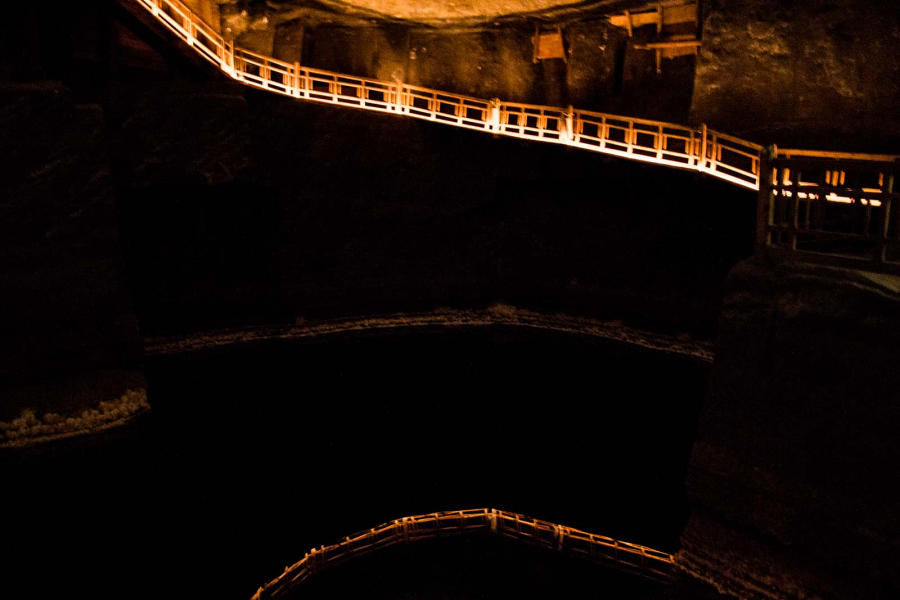
Since 1996, Wieliczka Salt Mine has been decommissioned as a salt mine and has become a tourist attraction. In 1978, it was declared a UNESCO World Heritage Site.

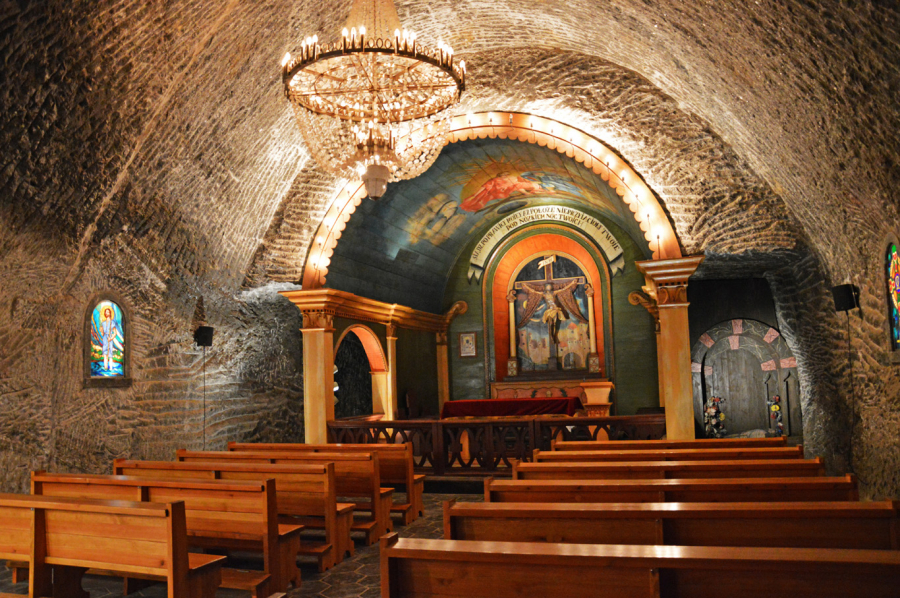
With the overall tourism planning, visitors can now enjoy Polish cuisine at shops right inside the cave as well as buy souvenirs and send them right at the small post office located more than 100 meters underground.
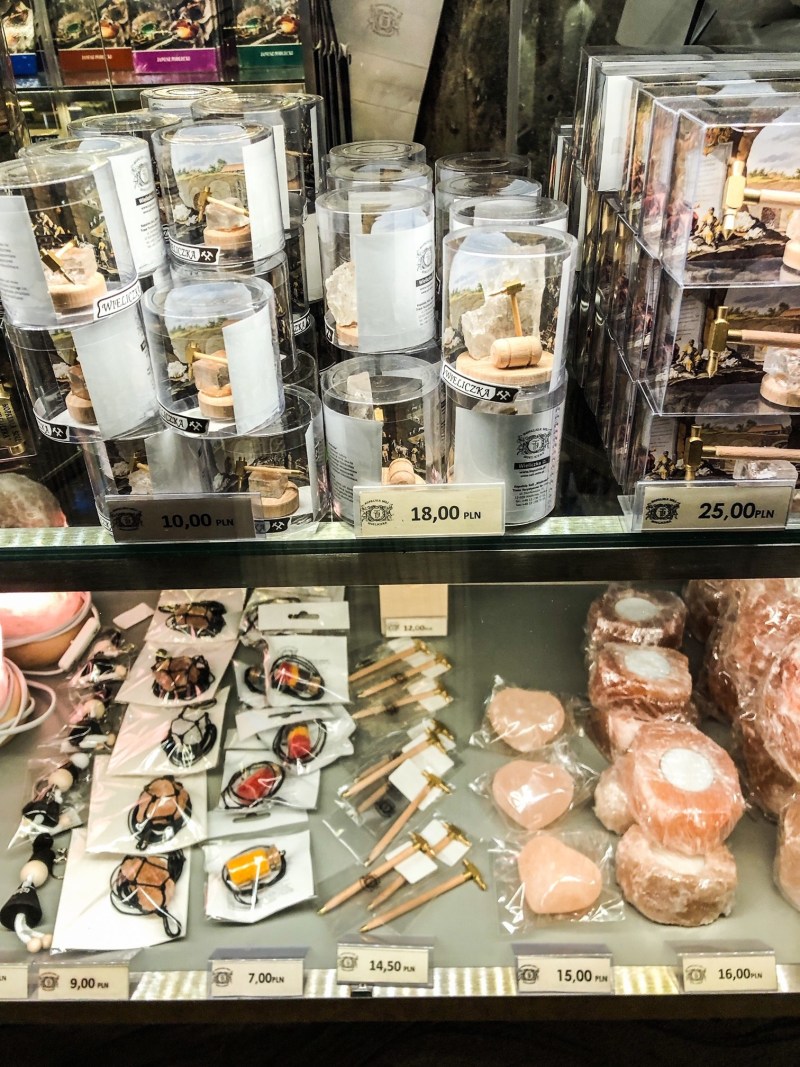

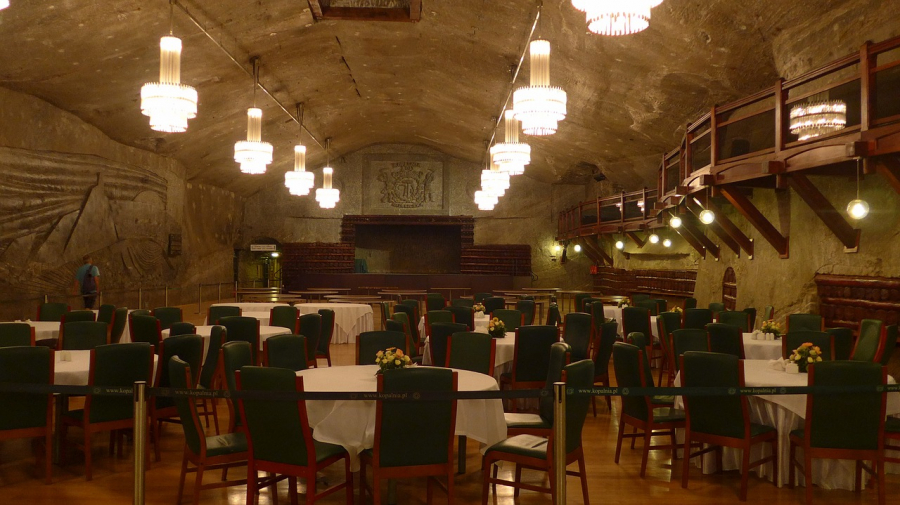
It is estimated that Wieliczka welcomes more than a million tourists each year to visit the salt mine. Even if you want to visit the salt mine by elevator instead of the usual walking, you need to book a month in advance.
